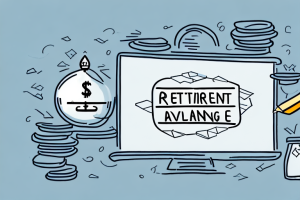Living off the interest of $100,000 is an enticing idea for many people seeking financial independence and a comfortable lifestyle. However, it requires careful planning, realistic expectations, and a solid understanding of various factors that come into play. In this article, we will explore the concept of living off interest, the potential of passive income, the amount of interest $100,000 can generate, calculating living expenses and investment returns, building a financial plan, exploring investment options, diversification, risk and return, maximizing interest earnings, tips for growing your initial investment, managing inflation, the role of time, creating a realistic timeline, utilizing compounding, minimizing taxes, potential drawbacks and risks, exploring alternative sources of passive income, adjusting your lifestyle, and seeking professional advice.
Understanding the concept of living off interest
Living off interest refers to relying on the income generated from investments, such as savings accounts, bonds, or stocks, to cover your living expenses. Instead of withdrawing the principal amount, the goal is to live off the interest earnings while preserving the initial investment. This approach allows your money to continue growing, providing financial security in the long run.
Living off interest can be a viable strategy for individuals who have accumulated a significant amount of savings or have made wise investment decisions. By living off the interest earned, you can maintain a steady income stream without depleting your initial investment. This can be particularly beneficial during retirement, as it allows you to enjoy a comfortable lifestyle while ensuring that your savings last for a longer period of time.
Exploring the potential of passive income
Passive income is a key component of living off interest. It refers to income generated from investments or business ventures that require minimal effort to maintain. Some popular sources of passive income include rental properties, dividend-paying stocks, royalties, and interest earned from savings accounts or bonds. The potential of passive income is significant, as it can provide a steady stream of income to support your lifestyle.
One of the advantages of passive income is that it allows individuals to have more freedom and flexibility in their lives. Unlike traditional employment, where you exchange your time and effort for a paycheck, passive income allows you to earn money even when you’re not actively working. This means that you can have more time to pursue your passions, spend time with loved ones, or even travel the world while still earning a steady income.
How much interest can $100,000 generate?
The amount of interest $100,000 can generate depends on various factors such as the interest rate, the type of investment, and the time period. For example, if you invest the $100,000 in a savings account with an annual interest rate of 2%, you would earn $2,000 in interest per year. However, it’s important to note that interest rates can fluctuate, and different investment options offer varying levels of return.
Additionally, the length of time you keep the $100,000 invested can also impact the amount of interest generated. Generally, the longer you keep your money invested, the more time it has to grow and accumulate interest. For instance, if you were to leave the $100,000 in the savings account for 10 years, you would earn a total of $20,000 in interest.
Calculating your living expenses and investment returns
Before determining whether you can live off the interest of $100,000, it is crucial to calculate your living expenses and estimate the investment returns. Start by creating a detailed budget that includes all your essential expenses such as housing, food, transportation, healthcare, and utilities. Once you have a clear understanding of your expenses, you can evaluate whether the interest earned from your investments is sufficient to cover these costs.
Additionally, it is important to consider any discretionary expenses that you may have, such as entertainment, travel, and hobbies. These expenses may not be essential, but they can significantly impact your overall budget and should be taken into account when determining if you can live off the interest of your investments.
Building a financial plan for living off interest
Building a comprehensive financial plan is vital when considering living off interest. This plan should outline your long-term goals, investment strategies, and risk tolerance. A financial advisor can help you in structuring a plan tailored to your specific needs and circumstances, considering factors such as inflation, taxes, and potential investment alternatives.
One important aspect to consider when building a financial plan for living off interest is the concept of diversification. Diversifying your investment portfolio can help mitigate risk and increase the likelihood of generating consistent income. By spreading your investments across different asset classes, such as stocks, bonds, and real estate, you can reduce the impact of any single investment performing poorly.
Another factor to take into account is the impact of inflation on your income. Over time, the purchasing power of your interest income may decrease due to inflation. It is crucial to factor in the inflation rate when determining how much interest income you will need to sustain your desired lifestyle. This can be done by considering investments that have historically outpaced inflation, such as certain stocks or real estate properties.
Exploring different investment options for generating passive income
There are numerous investment options available to generate passive income. Some popular choices include stocks, bonds, real estate investment trusts (REITs), peer-to-peer lending, and dividend-paying companies. Each option carries its own benefits and risks, and it is crucial to conduct thorough research and seek professional advice before making any investment decisions.
The importance of diversification in your investment portfolio
Diversification is a key strategy in lowering risk in your investment portfolio. By spreading your investments across different asset classes, industries, geographic regions, or investment vehicles, you can minimize the impact of a single investment’s performance on your overall portfolio. Diversification can help protect your income stream and provide a more stable and sustainable approach to living off interest.
Balancing risk and return in your investment strategy
When living off the interest of $100,000, it is important to strike a balance between risk and return. Higher-return investments typically come with higher risk, while lower-risk investments may offer lower returns. It is crucial to assess your risk tolerance and consider your financial goals before choosing investment options. A diversified and properly balanced portfolio can help manage risk while potentially generating sufficient income.
Maximizing your interest earnings through smart investing
To maximize your interest earnings, it is essential to adopt smart investing strategies. This includes conducting thorough research, staying updated on market trends, regularly reviewing and rebalancing your investment portfolio, and minimizing unnecessary fees and expenses. By making informed investment decisions, you can potentially enhance your interest earnings over time.
Tips for growing your initial investment to sustain a comfortable lifestyle
Growing your initial investment is crucial to sustaining a comfortable lifestyle when living off interest. Some tips for achieving this include reinvesting earnings, maintaining a disciplined savings plan, exploring additional income streams, managing expenses wisely, and seeking investment opportunities with long-term growth potential. Consistency and patience are key when aiming to grow your initial investment.
Managing inflation and its impact on living off interest
Inflation is an important consideration when living off interest. Over time, the purchasing power of your income can erode due to rising prices. To mitigate the impact of inflation, investing in assets that historically provide returns above the inflation rate can help preserve your purchasing power. Additionally, periodically adjusting your living expenses and investment strategies can help you adapt to changes in the economic environment.
The role of time in generating significant interest income
Time plays a critical role in generating significant interest income. The longer you can let your investments grow and compound, the more substantial your interest earnings can become. It is important to have a long-term perspective when living off interest and to stick to your financial plan even during periods of market volatility or fluctuations in interest rates.
Creating a realistic timeline for living off the interest of $100,000
Creating a realistic timeline for living off the interest of $100,000 involves considering various factors, such as your current age, retirement goals, living expenses, and the expected interest rate of your investments. Your financial plan and investment strategy should be aligned with your timeline and provide a clear roadmap to achieve your desired lifestyle.
Utilizing compounding to accelerate your interest earnings over time
Compounding is a powerful tool that can accelerate your interest earnings over time. By reinvesting the interest earned, your investment grows not only based on the initial principal but also from the accumulated interest. This compounding effect allows your wealth to snowball, potentially significantly increasing your interest income and enhancing long-term financial stability.
Strategies for minimizing taxes on your interest income
The tax implications of living off interest need to be considered when developing your financial plan. Strategies for minimizing taxes include utilizing tax-efficient investment vehicles, such as individual retirement accounts (IRAs) or tax-free municipal bonds, taking advantage of tax deductions and credits, and consulting with a tax professional to optimize your tax strategy based on your unique circumstances.
The potential drawbacks and risks of relying solely on interest income
Relying solely on interest income has potential drawbacks and risks that should be considered. These include fluctuations in interest rates, inflation eroding purchasing power, economic downturns impacting investment performance, and changes in personal circumstances that may require additional funds. Diversification, alternative income sources, and contingency plans are crucial to mitigate these risks and ensure financial stability.
Exploring alternative sources of passive income alongside interest earnings
Exploring alternative sources of passive income can supplement your interest earnings and enhance financial security. This may include rental properties, dividend-paying stocks, online business ventures, royalties from intellectual property, or even part-time work or freelancing in retirement. Diversifying income streams can provide additional sources of funds and help you better manage financial uncertainties.
Adjusting your lifestyle to align with the limitations and possibilities of living off interest
Living off interest requires adjusting your lifestyle to align with the limitations and possibilities of your income sources. This may involve making conscious choices about spending, prioritizing needs over wants, and finding fulfillment in non-monetary aspects of life. By adopting a sustainable approach to living within your means, you can ensure a more secure and satisfying financial future.
Seeking professional advice to optimize your financial strategy
Seeking professional advice is crucial when developing and optimizing your financial strategy for living off interest. A qualified financial advisor can provide personalized guidance, help you navigate complex investment options, develop tax-efficient strategies, and adapt your plan to changing circumstances. Their expertise can significantly improve your chances of successfully living off interest and achieving your financial goals.
In conclusion, living off the interest of $100,000 is possible with careful planning, smart investing, and a realistic understanding of your financial goals and limitations. By considering factors such as living expenses, investment returns, diversification, risk management, inflation, and time horizon, you can establish a solid foundation for generating sustainable passive income. Remember, seeking professional advice and periodically reviewing and adjusting your financial plan can help you navigate challenges and optimize your chances of living a comfortable and financially independent life.



